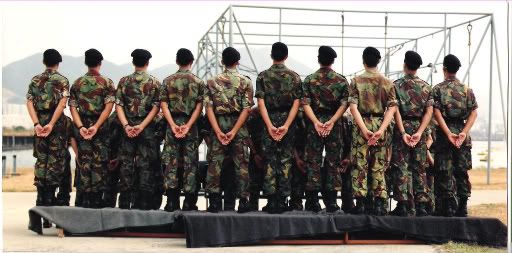Flash suppressor, also known as a flash hider, flash guard, flash eliminator, or flash cone, is a device attached to a rifle or other gun that directs hot escaping gases from the barrel end. It reduces the visibility of the blazing muzzle flash which occurs upon firing to the shooter and or other individuals.
Muzzle flash is especially visible at night, making it easy to see the location of the shooter, and at the same time interfering with the shooter's night vision. It is caused by incandescence of the expanding gases produced by burning gunpowder. Even during the day, the flash obscures the target view.
Two common types of flash suppressors are the duckbill and birdcage suppressors. Duckbill flash suppressors have upper and lower "prongs" and direct gases to the sides. Early Mk 43 and some early M16 models featured this type of flash suppressor. One disadvantage is that the prongs can become entangled with vines or other natural vegetation and objects in the field. Birdcage types still have prongs, but also feature a ring on the front to prevent vegetation from entanglement between the prongs. Another type of flash suppressor is a flash moderator, such as used on some XM177 models. An example of a cone-shaped hider is on the Bren machine gun.
Earlier rifle designs from the 19th century tended to have longer barrels than modern rifles. A beneficial side effect of the long barrel is that the gunpowder is completely burnt before the bullet leaves the barrel, usually resulting only in a puff of smoke from the muzzle. However, if the same weapon is "cut down", as is common in cavalry and jungle-combat adapted versions, the bullet would often leave the barrel before the powder was completely consumed. In this case, the still burning powder would emit a bright flash from the muzzle.
When barrel lengths were dramatically decreased with the introduction of various assault rifles, this flash became a serious problem in terms of preserving night vision during combat. Originally limited to "special purpose" roles, it was now expected that all infantry weapons would have short barrels with this problem, and thereby be of limited use in night combat. Flash suppressors became common on late-World War II and later assault rifle designs, and are almost universal on these weapons today.
It is commonly thought that they are used on military rifles to reduce visibility to the enemy, but the size of a device necessary to hide the muzzle flash from an enemy during night fighting would be prohibitively large. Military flash suppressors are designed to reduce the muzzle flash from the shooter to preserve the shooter's night vision, usually by directing the incandescent gases to the sides, away from the line of sight of the shooter. Military forces engaging in night combat are still quite visible at a distance when firing, and must move quickly after firing to avoid receiving return fire.
Limiting the amount of powder to what the length of a barrel can burn is one possible solution, but differences between individual cartridges mean that some cartridges will always have too much powder to be completely consumed, and the reduced powder load produces a lower projectile velocity. Muzzle flash can also be controlled by using cartridges with a faster-burning gunpowder, so that the propellant gases will already have begun to cool by the time they exit the barrel, reducing flash intensities. Faster-burning powders, however, produce less projectile velocity, which reduces the accuracy due to introducing more of a parabolic bullet flight path in place of a "flat" trajectory while also reducing lethality of the weapon through reducing energy delivered on target.
Flash suppressors reduce, or in some cases eliminate, the flash by rapidly cooling the gases as they leave the end of the barrel. Although the overall amount of burning gunpowder is unchanged, the density and temperature are greatly reduced, as is the brightness of the flash.
A number of different flash hider designs have been used. The simplest is a cone placed on the end of the barrel, which was used on the late-World War II jungle-combat versions of the Lee-Enfield, the No. 5 variant, intended for use in the Pacific. More modern solutions tend to use a "basket" with several slits or holes cut in it, as seen on the M16 and other small-bore weapons. Cone-shaped flash eliminators are also evident on the Bren LMG and on the turret-mounted aircraft machine guns of British WWII heavy bombers, which were used mostly at night.
Flash hiders are often used as a muzzle brake as well by symmetrically cutting slits near the top, but not the bottom, of the hider, which then provides some downward-force on firing as the gases escape upwards, thereby reducing muzzle climb, as well as dust kick up.
[ 本帖最後由 mswong 於 12-5-2008 01:59 編輯 ]
尊重人格, 請勿抄習
